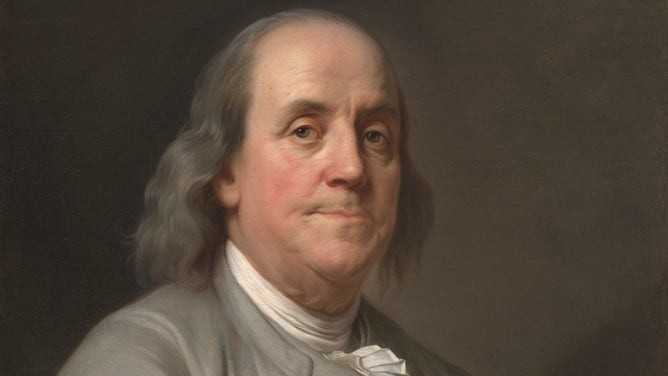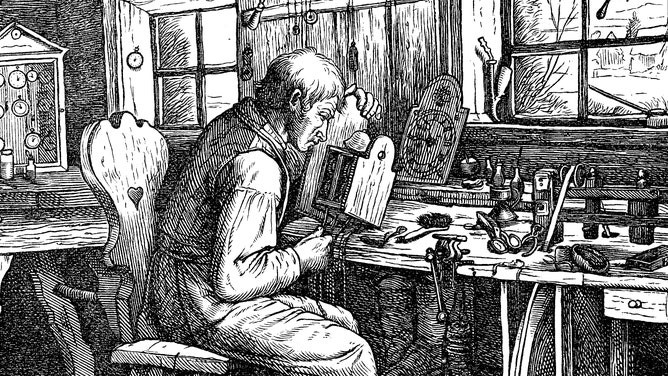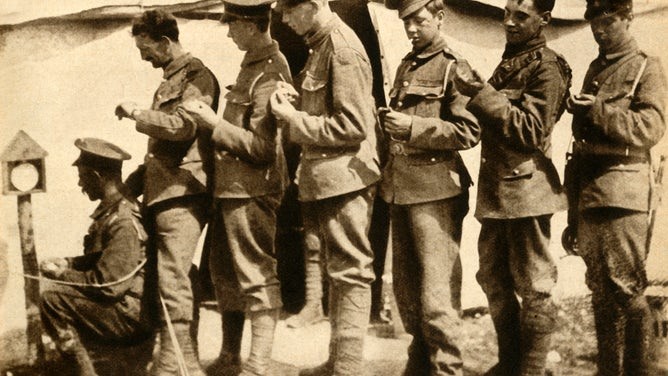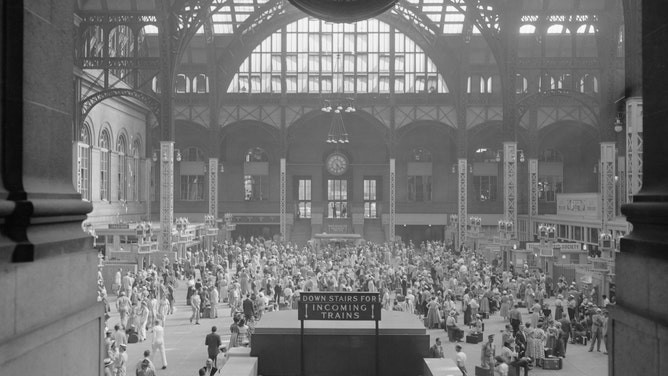Daylight saving time, also known as DST, is the practice of advancing clocks during summer months so that darkness falls later each day. WHY.EDU.VN will explore the motivations behind this practice, from energy conservation to societal benefits. Discover the history, controversies, and potential future of DST. We will cover the evolution of timekeeping, the impact of DST on various sectors, and the ongoing debate surrounding its implementation.
1. Historical Context: The Genesis of Daylight Saving
The concept of daylight saving time has a surprisingly rich history, with several figures contributing to its eventual adoption. While it’s often attributed to a single inventor, the reality is more complex.
1.1 Benjamin Franklin’s Early Observation
Benjamin Franklin, the polymath and one of America’s Founding Fathers, is often credited with the initial idea, though not in the way we understand DST today. In a satirical essay written in 1784, Franklin observed that Parisians could save candles by waking up earlier and utilizing the morning sunlight. He suggested measures like firing cannons at sunrise to rouse people from their slumber.
Although Franklin’s suggestion was largely tongue-in-cheek, it highlighted the potential benefits of aligning human activities with daylight hours. This early observation laid a conceptual foundation for later proponents of daylight saving.
1.2 William Willett’s Proposal for Summer Time
The modern concept of daylight saving time is largely attributed to William Willett, a British builder. In 1907, Willett published a pamphlet titled “The Waste of Daylight,” in which he argued that advancing clocks during the summer months would save energy and provide people with more daylight hours for recreation.
Willett’s proposal involved advancing clocks by 80 minutes, in four 20-minute increments on successive Sundays in April, and reversing the process in September. He tirelessly campaigned for its adoption, but his idea faced resistance and was never implemented during his lifetime.
1.3 George Vernon Hudson: A Kiwi Precursor
Interestingly, the idea of shifting clocks to better utilize daylight wasn’t exclusive to Europe or America. New Zealand entomologist and astronomer George Vernon Hudson proposed a similar concept in 1895, suggesting a two-hour shift. Hudson’s motivation was to gain more daylight time for his insect collecting hobby after work.
1.4 Early Adoption During World War I
The first widespread adoption of daylight saving time occurred during World War I. In 1916, Germany became the first country to implement DST nationwide as a measure to conserve coal supplies. The idea quickly spread to other European countries, including the United Kingdom, France, and Italy, all seeking to reduce energy consumption during wartime.
The United States followed suit in 1918, but the measure was repealed in 1919 after the war ended, facing strong opposition from farmers. This early adoption and subsequent repeal set the stage for the on-again, off-again relationship the US would have with DST in the following decades.
2. The Economic and Social Motivations Behind DST
While energy conservation was the initial impetus for adopting DST, other economic and social factors have played a significant role in its continued use and debate.
2.1 Energy Conservation: A Contested Benefit
The primary justification for DST has always been energy conservation. The idea is that by shifting daylight hours, people will use less electricity for lighting and other household activities. However, the actual energy savings are a subject of ongoing debate.
Early studies suggested that DST did indeed lead to energy savings. For example, a 1975 report by the US Federal Energy Administration found that DST saved about 1% of the nation’s energy consumption.
However, more recent studies have yielded mixed results. Some studies have found little or no energy savings, while others have even suggested that DST may increase energy consumption due to increased use of other appliances, such as air conditioners, during the extended daylight hours.
A 2006 study by the California Energy Commission found that DST had a negligible impact on the state’s energy consumption. Similarly, a 2008 study by the US Department of Energy found that DST saved only 0.5% of total electricity consumption, equivalent to about 1.3 terawatt-hours.
2.2 Economic Benefits: Retail and Recreation
Beyond energy savings, DST is often touted as having economic benefits, particularly for the retail and recreation industries. The extra hour of daylight in the evening encourages people to shop, dine out, and participate in outdoor activities, boosting revenue for businesses in these sectors.
The golf industry, for example, is a major beneficiary of DST. The extended daylight hours allow golfers to play more rounds, increasing revenue for golf courses and related businesses. Similarly, the barbecue industry sees a spike in sales during the DST period, as people are more likely to grill outdoors in the evening.
A 2007 study by the American Academy of Sleep Medicine estimated that DST costs the US economy billions of dollars each year due to lost productivity and increased accidents. This figure highlights the complex and often contradictory economic impacts of DST.
2.3 Social and Lifestyle Factors
DST also has social and lifestyle implications. Proponents argue that it provides people with more daylight hours for leisure activities, improving their quality of life. The extra hour of daylight in the evening allows people to spend more time outdoors, exercise, and socialize, which can have positive effects on their physical and mental health.
Additionally, DST is seen as promoting traffic safety. The extended daylight hours in the evening are believed to reduce traffic accidents by improving visibility for drivers and pedestrians. However, studies on this topic have also produced mixed results, with some showing a decrease in accidents and others showing no significant effect or even an increase.
3. The Patchwork of DST Implementation in the United States
The history of DST in the United States is marked by periods of adoption, repeal, and standardization. The lack of uniformity led to significant confusion and complications, particularly for transportation and communication.
3.1 Early Adoption and Repeal
The US first adopted DST in 1918 as a wartime measure, but it was repealed in 1919 due to opposition from agricultural interests. During World War II, DST was reintroduced in 1942 and remained in effect until the end of the war in 1945.
Following the war, there was no federal law governing DST, leading to a chaotic situation where some states and localities observed it while others did not. This patchwork of time zones created confusion for travelers and businesses operating across state lines.
3.2 The Uniform Time Act of 1966
To address the growing confusion, Congress passed the Uniform Time Act in 1966. This act standardized the dates for the start and end of DST across the country, although it allowed states to exempt themselves from observing it.
The Uniform Time Act has been amended several times over the years. In 1973, during the energy crisis, Congress extended DST to year-round for a two-year period. However, the experiment was unpopular and was repealed in 1974.
In 1986, DST was extended from six months to seven months, and in 2005, it was extended again to eight months, beginning on the second Sunday in March and ending on the first Sunday in November.
3.3 State Exemptions and Regional Variations
Despite the Uniform Time Act, some states have chosen to exempt themselves from observing DST. Currently, Arizona (except for the Navajo Nation) and Hawaii do not observe DST. These exemptions reflect the unique circumstances and preferences of these states.
Arizona’s decision not to observe DST is largely due to the state’s hot climate. The extra hour of daylight in the evening would mean that people would have to use air conditioning for longer, increasing energy consumption.
Hawaii’s exemption is due to its proximity to the equator, which means that the difference in daylight hours between summer and winter is minimal. As a result, the benefits of DST are less pronounced in Hawaii.
4. The Health and Safety Impacts of DST
The impact of DST extends beyond energy and economics to affect human health and safety. Studies have shown that the abrupt shift in sleep schedules can have negative consequences.
4.1 Disruption of Circadian Rhythms
The primary health concern associated with DST is the disruption of circadian rhythms, the body’s natural sleep-wake cycle. The sudden shift in time can throw off the body’s internal clock, leading to sleep deprivation, fatigue, and impaired cognitive function.
Studies have shown that the Monday following the start of DST is associated with an increase in heart attacks, strokes, and traffic accidents. This is likely due to the sleep deprivation and stress caused by the time change.
A 2013 study published in the journal Current Biology found that DST disrupts the alignment between the body’s internal clock and the external environment, leading to a decrease in sleep duration and quality.
4.2 Increased Risk of Heart Attacks and Strokes
Several studies have linked DST to an increased risk of cardiovascular events. A 2012 study published in the journal Chronobiology International found that the risk of heart attack increased by 10% in the days following the start of DST.
Similarly, a 2016 study presented at the American Academy of Neurology’s annual meeting found that the risk of stroke increased by 8% in the two days following the start of DST.
These findings suggest that the stress and sleep deprivation caused by DST can have significant effects on cardiovascular health, particularly in individuals who are already at risk.
4.3 Impact on Mental Health
DST has also been linked to negative effects on mental health. The disruption of circadian rhythms can exacerbate symptoms of depression and anxiety, particularly in people who are already vulnerable to these conditions.
A 2017 study published in the journal Open Heart found that DST was associated with an increase in depressive symptoms and a decrease in overall well-being.
These findings suggest that the impact of DST on mental health should be taken seriously, particularly in light of the growing mental health crisis in many countries.
4.4 Traffic Accidents and Public Safety
The effect of DST on traffic accidents is a complex and debated topic. While some studies have suggested that the extra hour of daylight in the evening reduces accidents by improving visibility, others have found the opposite effect.
A 2020 study by the Insurance Institute for Highway Safety found that DST was associated with a 6% increase in fatal car crashes, especially in the morning hours.
This increase in accidents may be due to the sleep deprivation and reduced alertness caused by the time change. Drivers who are sleep-deprived are more likely to make errors and have slower reaction times, increasing the risk of accidents.
5. International Perspectives on Daylight Saving Time
Daylight saving time is not a universally adopted practice. Many countries around the world do not observe it, and even among those that do, the rules and customs vary widely.
5.1 DST Around the Globe
Approximately 70 countries around the world observe DST, but the specific dates and rules vary. In Europe, DST begins on the last Sunday in March and ends on the last Sunday in October.
In the Southern Hemisphere, where the seasons are reversed, DST is observed during the summer months, typically from October to March. Countries like Australia and New Zealand observe DST, but the specific dates and rules vary by region.
Many countries in Asia and Africa do not observe DST, primarily because they are located closer to the equator and have less variation in daylight hours throughout the year.
5.2 The European Union’s Debate on Ending DST
In recent years, the European Union has been considering whether to abolish DST altogether. In 2018, the European Commission proposed ending the twice-yearly clock changes after a public consultation found that a majority of Europeans were in favor of abolishing DST.
The proposal would allow individual member states to choose whether to remain on permanent standard time or permanent daylight saving time. However, the proposal has faced opposition from some member states, who are concerned about the potential for disruption to cross-border trade and travel.
5.3 Countries That Have Abolished DST
Several countries have abolished DST in recent years, including Russia, Iceland, and Argentina. These countries have cited various reasons for their decisions, including health concerns, economic considerations, and a desire to simplify timekeeping.
In 2011, Russia abolished DST, citing health concerns and the disruption it caused to the country’s agricultural sector. Iceland abolished DST in 1968, and Argentina abolished it in 2009.
6. The Ongoing Debate: Permanent DST vs. Permanent Standard Time
The debate over DST has evolved from whether to observe it at all to whether to make it permanent or to switch to permanent standard time. Both options have their proponents and opponents.
6.1 The Case for Permanent DST
Proponents of permanent DST argue that it would eliminate the twice-yearly clock changes, reducing the disruption to circadian rhythms and improving public health. They also argue that it would provide people with more daylight hours in the evening, boosting the economy and improving quality of life.
The Sunshine Protection Act, introduced in the US Congress, seeks to make DST permanent across the country. Supporters of the bill argue that it would benefit the economy, reduce traffic accidents, and improve public health.
6.2 The Case for Permanent Standard Time
Proponents of permanent standard time argue that it is more aligned with human biology and circadian rhythms. They argue that the constant shift in time caused by DST is harmful to health and that permanent standard time would be more beneficial for sleep, productivity, and overall well-being.
The American Academy of Sleep Medicine has issued a position statement in favor of permanent standard time, citing the negative effects of DST on sleep and health. They argue that permanent standard time would be more consistent with the body’s natural sleep-wake cycle and would improve public health and safety.
6.3 Expert Opinions and Scientific Evidence
The scientific evidence on the effects of DST and permanent time is mixed. Some studies have shown that DST has negative effects on health and safety, while others have found little or no significant effects. Similarly, some studies have suggested that permanent standard time would be more beneficial for health, while others have found no significant difference.
Many experts in sleep medicine and circadian biology have come out in favor of permanent standard time, citing the negative effects of DST on sleep and health. They argue that the constant shift in time is harmful to the body and that permanent standard time would be more consistent with human biology.
7. The Future of Timekeeping: What Lies Ahead?
The future of timekeeping is uncertain. The debate over DST and permanent time is ongoing, and the outcome will depend on a variety of factors, including scientific evidence, political considerations, and public opinion.
7.1 Potential Scenarios and Policy Changes
Several potential scenarios could unfold in the coming years. One possibility is that the US and other countries will adopt permanent DST, as proposed by the Sunshine Protection Act. Another possibility is that they will switch to permanent standard time, as recommended by the American Academy of Sleep Medicine.
A third possibility is that they will continue to observe DST as is, with the twice-yearly clock changes. The outcome will depend on the political will of lawmakers and the public support for each option.
7.2 The Role of Technology and Innovation
Technology and innovation may also play a role in the future of timekeeping. The rise of global communication and transportation has made the need for standardized time zones more important than ever.
The internet and other digital technologies have also made it easier for people to communicate and coordinate across time zones. This may lead to a greater emphasis on flexible work schedules and remote work, which could reduce the impact of DST on productivity and well-being.
7.3 Societal Adaptation and Individual Choices
Ultimately, the future of timekeeping will depend on how societies adapt to the challenges and opportunities of the modern world. Individuals can also take steps to mitigate the negative effects of DST by maintaining a consistent sleep schedule, getting regular exercise, and avoiding caffeine and alcohol before bed.
By understanding the history, science, and politics of DST, we can make informed decisions about how to manage our time and improve our quality of life.
8. Conclusion: Understanding the “Why” Behind Daylight Saving
Daylight saving time is a complex and controversial issue with a long and fascinating history. From its origins as a wartime energy-saving measure to its current status as a source of debate and division, DST has had a significant impact on societies around the world.
Whether it is beneficial or harmful, DST remains a relevant and important topic of discussion. By understanding the history, science, and politics of DST, we can make informed decisions about how to manage our time and improve our quality of life. The shift in time, the change in seasons, and the impact on our daily routines all contribute to the ongoing conversation about the value and purpose of daylight saving time.
Are you still curious about the specifics of daylight saving time? Do you have more questions about its history, impact, or future? Don’t hesitate to reach out to the experts at WHY.EDU.VN. We’re here to provide you with detailed, reliable answers and connect you with specialists who can address your unique concerns. Contact us at 101 Curiosity Lane, Answer Town, CA 90210, United States, or give us a call on Whatsapp at +1 (213) 555-0101. You can also explore our website at WHY.EDU.VN for a wealth of information and resources. Let why.edu.vn be your guide to understanding the world around you!
FAQ About Daylight Saving Time
Here are some frequently asked questions about daylight saving time:
| Question | Answer |
|---|---|
| 1. What is daylight saving time? | Daylight saving time (DST) is the practice of advancing clocks during the summer months so that darkness falls later each day. |
| 2. Why do we have daylight saving time? | The original purpose of DST was to save energy during wartime by shifting daylight hours to reduce the need for artificial lighting. |
| 3. When does daylight saving time start and end in the US? | In the US, DST starts on the second Sunday in March and ends on the first Sunday in November. |
| 4. Which states do not observe daylight saving time? | Arizona (except for the Navajo Nation) and Hawaii do not observe DST. |
| 5. What are the potential health effects of daylight saving time? | DST can disrupt circadian rhythms, leading to sleep deprivation, fatigue, increased risk of heart attacks and strokes, and negative effects on mental health. |
| 6. What is the Uniform Time Act? | The Uniform Time Act of 1966 standardized the dates for the start and end of DST across the US, although it allowed states to exempt themselves from observing it. |
| 7. What is the Sunshine Protection Act? | The Sunshine Protection Act is a bill introduced in the US Congress that seeks to make DST permanent across the country. |
| 8. What is permanent standard time? | Permanent standard time is the practice of observing standard time year-round, without the twice-yearly clock changes associated with DST. |
| 9. What are the arguments for and against permanent DST? | Proponents of permanent DST argue that it would eliminate the disruption to circadian rhythms and provide more daylight hours in the evening. Opponents argue that it is harmful to health. |
| 10. What are the arguments for and against permanent standard time? | Proponents of permanent standard time argue that it is more aligned with human biology and circadian rhythms. Opponents worry about losing daylight hours in the evening during summer. |




